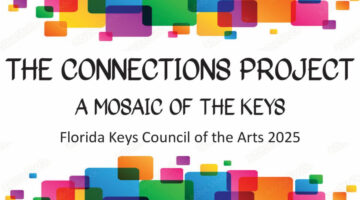VEIWPOINT / EQUALISM OR EQUITY: IS THE FDR SOCIAL CONTRACT BROKEN?
By Timothy Weaver
We all agree as a supposition that society benefits from selecting and placing in positions of leadership the most talented and best prepared men and women we have to offer. The means we have chosen to do this is a system of colleges and universities, fed by a system of primary and secondary education. The government has long accepted the responsibility of supporting common schools up though grade 12. The government has also long accepted the responsibility of supporting a system of public colleges and universities. At first the public college concept was better described as a system to prepare school teachers called normal schools. Private colleges have been here since the founding of the nation to train leaders in divinity. These public normal schools have evolved into state colleges.
Public universities were in part brought about by Lincoln’s desire to see a national system of advanced education that would prepare young men for the world of mechanics and agriculture–a need he foresaw coming all around the world. The Land Grant University was born. This entire system of education evolved in response to need and because there was nearly universal belief that it was the appropriate response to that need. In sociological lingo this is a “social contract.” It is an agreement shared by most that sacrifice is necessary for the common good, a common good that is defined and promoted in the form of an educated workforce.
Today that social contract is badly bend, if not broken, especially at the level of higher education. With the family share of college cost accelerating and no relief in sight, the working and middle class will be unable to participate in the historical best form of peaceful social mobility known to mankind–public education.
This set of circumstances will surprise no one familiar with inflationary cost pressures in higher education. Yet, how to explain it. When I attended a state college in West Virginia (Glenville) starting in 1958 the tuition was $50 a year. Believe it or not, that seemed like a lot of money to me then. My highest paying summer job was $1 an hour and I was lucky to get that because my dad and grandad were glass cutters. I was able to work at the Pittsburgh Plate in Clarksburg as an apprentice. Today, the tuition at Glenville State College is $7,308 per year. Now, consider this. In 1958 dollars, $50.00 is now equivalent to $465.74. As scholars like to say, ceteris paribus, the tuition at Glenville State College should this year be no more than $465.74–had tuition costs kept pace with the Consumer Price Index. What explains the difference between general inflation as measured by the CPI and college tuition?
The simplest answer is that we have made it this way. Through deliberate policy actions we end up where we are today with college becoming unaffordable for the very people it was once designed to lift up–working families. The reason tuition was $50 in 1958 is that funding from the state and federal government for higher education made it possible for colleges to charge low fees to families they served. Since the 1970s, we have collectively made a decision through our repeated votes to elect politicians who do not believe, as was widely believed after the war and up through the 1960s, that social mobility and upward progress of the working class should be a concern of the government. It is not that the government stopped spending money on higher education. Far from it.
The core belief is still there–government should provide for some share of higher education. What seems to have shifted is the nature of that contract–how much should government assist? Should the assistance be such that it helps to overcome maldistribution of income? That would mean that the family share of college cost would be very low or non-existent, e.g., the Biden proposal to make the first two years of college free. Or, should the assistance be aimed at treating everyone alike regardless of financial need.
This latter approach would be more rooted in the desire to make college something every family has to save for, sacrifice for and earn. Under this conception, every family has an equal opportunity to sacrifice. Education should not be a free ride. The government should not try to offset the indifference or apathy of some families, nor the lack of resources among all families. This set of beliefs seems to have gained momentum and eventually prevailed at the national level since the Nixon years. This might be the lasting Nixonian Doctrine: We get ahead in life by hard work, and hard work is something we all have an equal opportunity at doing.
The share of total college costs borne by the federal government since the 1970s has been declining and over the past 20 years declining at a more rapid rate. The states’ share of college costs has been shrinking also. The governor of West Virginia, Jim Justice, and the legislature have managed to do what most would have thought impossible: cut college spending at just the time when government spending on education is most needed as we emerge from a worldwide pandemic and huge job losses.
Where is all this headed? Backwards. Families that would have been able to send their kids to college in my day, cannot do so today. When this reality catches up with preferred beliefs, the situation will change. Not until then. I like to think we are at a tipping point. If I am right, the new/old approach Biden is taking is promising. The animus seems on the side of equity in this administration–making up for inequalities that are not the fault of the child.
These two grand competing ideas have griped the American psyche since the founding of the nation. Do people rise and fall by their own efforts, or should the government interfere and tip the scales toward those who need help to rise up? We see this struggle throughout the 19th Century with the industrial revolution and the Robber Barons, to the imposition of a progressive income tax. The next century had its struggle due to two world wars and the Great Depression. The outcome of this struggle over equity v. equalism is never certain. We see it’s arc today appears once again to be bending. Will this new direction toward equity continue?
The next two elections are crucial. If the administration gets too far out ahead of collective agreement that change is needed, then it will fail. If it acts too slowly, the vacuum will be refilled by the old concept. We need a name for the old concept. I am calling it “Equalism,” the belief that government is about equal opportunity, not righting social wrongs and injustices.
Watching America struggle with these great truths is always interesting, to say the least. I’m putting my money with MLK—on justice.
[livemarket market_name="KONK Life LiveMarket" limit=3 category=“” show_signup=0 show_more=0]




No Comment